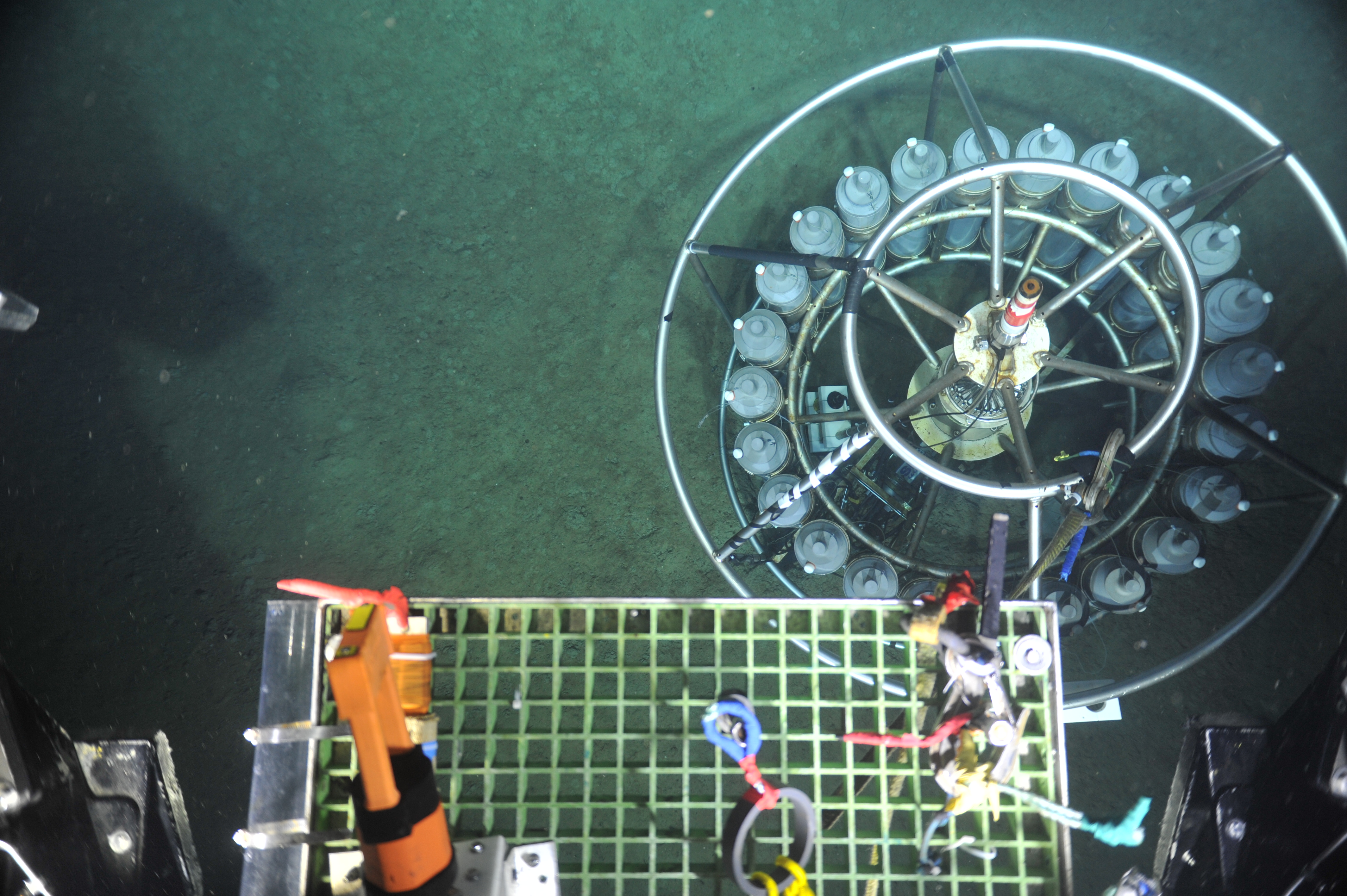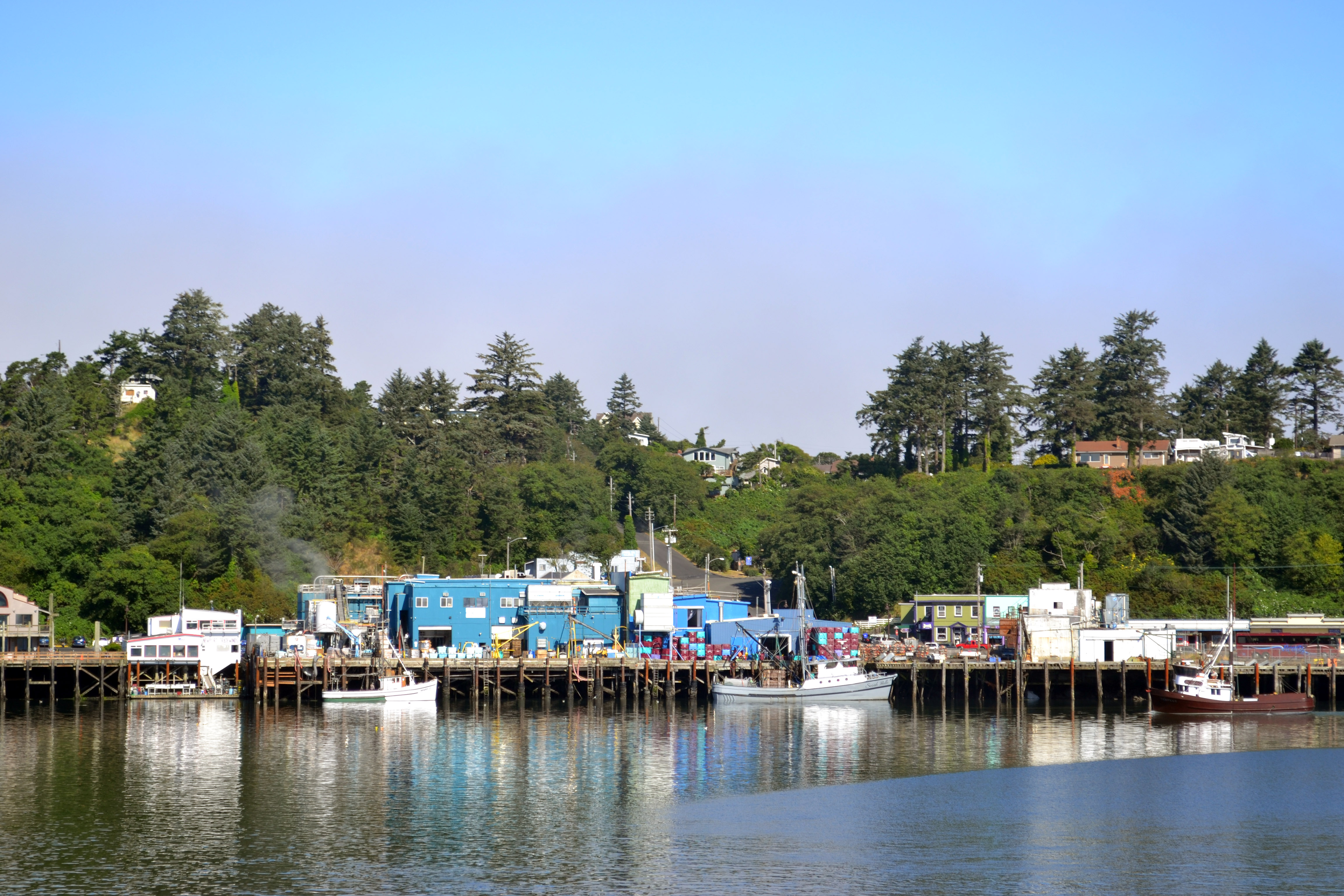Image Archive





























A holothurian forages at 9000 ft at the base of the continental margin ~ 125 km off Newport Oregon. VISIONS '13, Leg 4 Photo credit: NSF-OOI/UW/CSSF.

John and James check out the caisson on the tool sled prior to deployment. VISIONS '13, Leg 4 Photo by Mitchell Elend

A great learning experience regarding the impact of pressure on materials is provided by placing styrofoam cups and heads in mesh bags on the CTD and deploying them >9000 feet beneath the oceans surface. This image shows a very small head that experienced a 'free fall' event when the CTD wire parted after a prior 9000 foot planned trip to the seafloor during routine CTD operations. A wig head that has not yet made it to the seafloor is shown on the right for comparison. Oh, and Deb Kelley's head is used for scale.

I got to collect fluid samples with Colin from the Niskin bottles on the CTD for follow-on shore-based analyses. Photo Credit: Mitch Elend

The CTD was safely brought onboard after its freefall >9000 feet to the seafloor below. A follow-on test showed it was ok.

First day at the Fire and Safety drill onboard the R/V Thompson, I got to practise the 'art' of putting on a survivial suit.

My first day at sea began with a transit from Newport Oregon to Southern Hydrate Ridge, ~ a 5 hr steam to the west. Photo Credit: Charlie Parker.

The remotely operated vehicle ROPOS used a snap hook connected to a line on its underbelly, hooked into the frame of the CTD for recovery to the surface. The CTD wire failed as the sensor-sampling package was being recovered onto the deck of the Thompon. Luckily, after its >9000 free descent to the seafloor, it landed upright in the soft sediment. Photo credit: NSF-OOI/UW/CSSF.

The CTD is recovered from a water depth of 2902 m at the base of the subduction zone at a site where full water column moorings will be deployed next year and connected to the cable. The ROV ROPOS attached a snaphook to the top of the CTD frame, securing it under the ROV for transport to the surface. Photo credit: NSF-OOI/UW/CSSF.

A strong plume of methane-rich bubbles issue from the seafloor at the Summit of Southern Hydrate Ridge. This area collapsed sometime between 2010 and 2011, probably due to methane release from the subsurface. VISIONS '13, Leg 4 Photo credit: NSF-OOI/UW/CSSF

This caisson is buried to about 1 m depth beneath the sediments. Next year a broadband seismometer will be placed in it and connected to the cable, providing real-time detection and location of earthquakes. A cover was placed over the caisson to keep sediment from falling into it and animals out. Credit: UW/NSF-OOI/CSSF. V13.

The ROV ROPOS vacuums out sediment in a caisson at the summit of Southern Hydrate Ridge. In 2014, a broadband seismometer will be placed in the caisson and covered in silica beads to optimize acquisition of acoustic signals by lowering ocean "noise" (e.g. currents). Credit: UW/NSF-OOI/CSSF.

Owen Coyle showing student Adrian Rembold how to collect water samples during VISIONS'13, Leg 2. Photo by Mitchell Elend

Departing Newport in the sun, which rapidly turned to fog at the jetty.

Deployment of the Bottom Pressure and Tilt meter off the side of the R/V Thompson in 2013. Credit: M. Elend, University of Washington. V13.

Cody Turner and John Delaney conduct a live broadcast from aboard the R/V Thompson during the VISIONS '13 Expedition, Leg 3. (Photos by Leslie Sautter)

Fredrik Ryden created a prototype 3D visualization of ROPOS dives for his student project. This image shows 15 dives simultaneously on Axial Caldera's bathymetry. The black lines are the RSN cable routes extending from Primary Node PN3B (on the lower right of the image).

As her student project, Marisa Gedney is developing an outreach-oriented web site filled with information on Axial Seamount.

Montgomery Taylor created a portion of a laboratory exercise as her student project.

J. Ryan Rembert's project is developing a web application to show the ROV dives and associated metadata.

ROPOS was sent down to retrieve a seismometer at the end of VISIONS '13 Leg 3 Photo credit: NSF-OOI/UW/CSSF

Empty ROCLS spools on Thompson fantail at end of VISIONS '13, Leg 3, are emblematic of the cable-laying work accomplished. Photo by Nancy Penrose

Fredrik Ryden (holding Neruda poetry book) and Thompson Captain Russ Devaney, VISIONS '13, Leg 3 Poetry Night

Ryan Cox, performs for the VISIONS '13, Leg 3 Poetry Night. Photo by Ben Fundis

Left to right: Julie Nelson, Montgomery Taylor, and J. Ryan Rembert, VISIONS '13 Leg 3 Poetry night. Photo by Ben Fundis

Brendan Philip, VISIONS '13 Leg 3 Poetry Night, gets a laugh from Brian Clampitt while reading his poem. Photo by Ben Fundis

Ship's crew member, Dana Africa, reads a shaggy dog story on Poetry Night, Leg 3, VISIONS '13. Photo by Ben Fundis

Ed McNichol, VISIONS 13, Leg 3 Poetry Night, tells the girl, the boy, and the pig story. Photo by Ben Fundis
- Anemone
- Animal
- Arthropod
- ASHES
- Axial
- Axial Base
- Axial Biology
- Axial Caldera
- Bacteria
- Basalt Lava
- BEP
- Biofouling
- biolgoy
- Biology
- Camds
- Camera
- Camhd
- Central Caldera
- Ciliates
- Cnidaria
- Coastal Biology
- Crab
- Deep Profiler Mooring
- Dive Highlights
- Eastern Caldera
- Echinoderms
- Endurance Array
- Engineering Team
- ENLIGHTEN 10
- Exploratorium
- Fish
- Geology
- HD Camera
- HPIES
- Hydrate Ridge
- Hydrates
- Hydrophone
- Hydrothermal Vents
- Illustration
- Inshore 80 Meters
- Instrument
- International District
- J-BOX
- Jason
- Jellyfish
- Junction Box
- K12
- Lava
- Mollusk
- Moorings
- Nodes
- Nudibranch
- Octopus
- OOI
- Oregon Offshore
- Oregon Offshore 600 m
- Oregon Shelf
- Oregon Slope Base
- People
- PN1B
- PN1D
- Polychaetes
- PPSDN
- Primary Node
- RASFL
- ROCLS
- ROPOS
- ROPOS Dives
- ROV Team
- RV Revelle
- RV Sikuliaq
- RV Thompson
- Salp
- Sample
- SC13
- Science Team
- Sea Cucumber
- Sea Star
- Sea Urchin
- Seafloor
- Seismometer
- Sensors
- Shallow Profiler Mooring
- Shark
- Shipboard
- Shore Station
- Slope Base
- Smoker
- Soft Coral
- Southern Hydrate Ridge
- Sponge
- Squid
- Students
- Students & Guest Participants
- Tmpsf
- Tubeworms
- VISIONS 11 Leg 1
- VISIONS 11 Leg 2
- VISIONS 11 Viewers
- VISIONS 13
- VISIONS 14
- VISIONS 15
- VISIONS 16
- VISIONS 17
- VISIONS 18
- VISIONS 20
- VISIONS 22
- VISIONS 23
- Visualization
